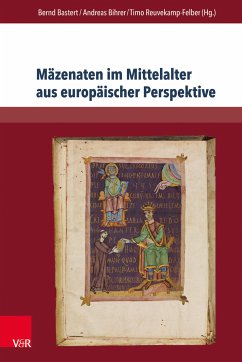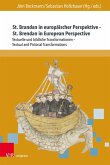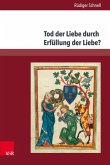The citations of noble ladies and gentlemen in literary and artistic works of the Middle Ages were always attested with historical information value. However, current medievalist research is increasingly interpreting the naming of benefactors in terms of profiling an artistic claim to prestige by the originators. The current volume takes this as its starting point: for the first time ever, it offers an interdisciplinary approach to the manifestations of benefactorial patrons in European literature. Twelve individual studies by German scholars, historians, Medieval Latinists, Dutch philosophers, Romanists and art historians elucidate how the naming of patrons spanned the poles between historical information and aesthetic conceptualisation.
Dieser Download kann aus rechtlichen Gründen nur mit Rechnungsadresse in A, B, BG, CY, CZ, D, DK, EW, E, FIN, F, GR, H, IRL, I, LT, L, LR, M, NL, PL, P, R, S, SLO, SK ausgeliefert werden.









